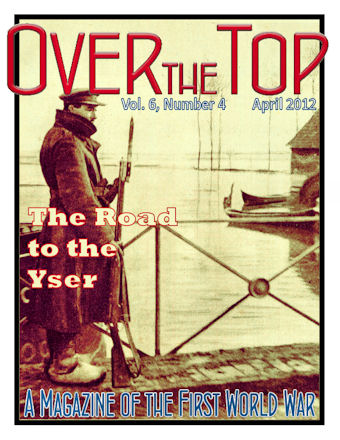


April 1912
RMS Titanic Meets Her Fate

Sinking of the Titanic (detail)
Max Beckmann, 1912-13 |
Was the Titanic's sinking a premonition of the coming
catastrophe of the First World War? Alas, despite the immediacy of the nautical disaster and the soon-to-arrive war, such conjectures are strictly retrospective, apparently. There were many individuals who shared general premonitions of impending disaster in the run-up to the war, ranging from a number of poets, who were in something of a collective grim mood at the time, the psychiatrist Carl Jung, and Woodrow Wilson's advisor Colonel House. The closest specific case seems to involve a work of art. The noted German allegorical painter Max Beckmann produced a depiction of the sinking that captures the horribleness of the event, and, possibly, tries to render some deeper warning to the viewer.
Nonetheless, the Titanic does have a great number of links to the war. The fates of its sister ships, the parallels with RMS Lusitania's sinking, and the sometime heroic wartime participation by the ship's surviving crew and passengers make the sinking of the Titanic part of the saga of the First World War.
|
TRENCH REPORT: When I'm invited to speak to groups about the First World War, I'm often asked why I chose to focus on it as an area of study. My response is usually that I simply find the war and the surrounding events endlessly interesting. Besides the great historical episodes and the forces they set loose, the period has its own music, art, and literature, unique mythological and archeological dimensions, an endless supply of heroes and villains, science and technology accelerated at a blinding pace, and myriad opportunities to reflect on man's fate given his capacities for wishful thinking and destruction. Yet they "soldiered on" despite all. James Michener in his great travel book Iberia pointed out that the best way to educate yourself about how the world works is to pick out one area or culture and learn everything you can about it, from history to geology to theology. For me, the Great War of 1914-1918 provides a perfect opportunity for doing this. Of course, I'm just getting started having started, on this long path only since 1988. I'm sure you have your own reasons, but I've raised this point here because I detect something in the air. Interest in the war is on the rise. The recent film and TV dramas are one sign of this. Some of you, I'm sure, are going to be asked soon by family and friends just why you are so interested in such a distant subject as the Great War. If you've been reading the Trip-Wire regularly, I'm pretty sure you will be able to come up with a good answer for them. If they still seem puzzled about any sort of interest in history, you might remind they of what de Tocqueville said, "When the past no longer illuminates the future, the spirit walks in darkness." MH
New at Our Own & Our Friends' Great War Websites
Click on Title or Icon to Access
|
News About the World War One Historical Association's Website
The Association's new website has just gone online. The homepage address will be the same: ww1ha.org. This is our first phase of implementation. Everything is accessible but for a few months you will be running into references to our parent organizations, as we convert their resouce files to our new look.
|
Meanwhile, preparations proceed at full-speed for our annual event:
The WW1HA National Seminar
USMC University, Quantico
7-8 Sept. 2012
Contact: Carol Vandenbruhl
email: cvandenbruhl@netscape.net
tel: 248-471-2366
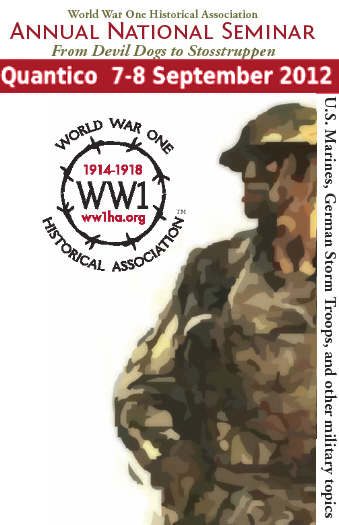
Click on the image above to access full program and registration information.
|
The World Heritage Tourism Research Network is conducting an online survey about how the public views the coming centennial of the First World War. Please make sure that the views of our readers and members are part of their finding. You can access the survey (here). It takes about ten minutes, is slightly repetitive, but raises some important issues.
|
|
|

The New World War One Historical Association
Website Has Gone Live at ww1ha.org
(Click Here or on Image to Access It)
This Month's Internet Feature
Great War Photo Collections
The standard photographs from the war are easy to find using Google's image search. But some collections stand out for their variety and some unique images. Here are some:
FirstWorldWar.com Vintage Photos
Italian Front: Isonzo and Trentino
The Heritage of the Great War from the Netherlands
Great War Photos
Gallipoli Slide Show (90 images from 1915)
NY Public Library WWI Digital Collection

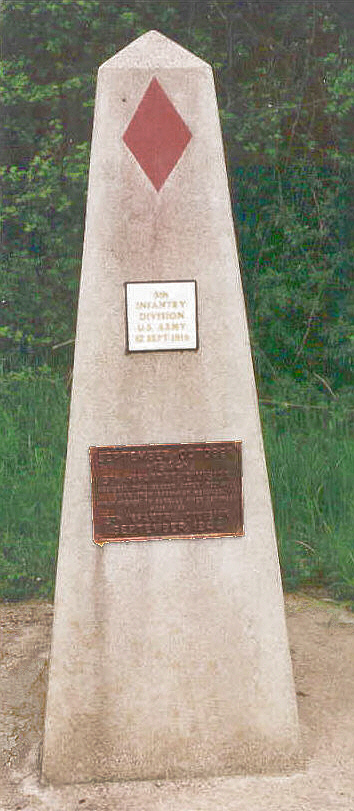
Notice that the marker above for the U.S. Fifth Division, located at Regnieville on the south edge of the St. Mihiel Salient, bears two plaques. The 5th division launched major offensives from the same spot in both World Wars. On 12 September 1918 it attacked here in the four-day reduction of the St. Mihiel Salient and on 16 September 1944 the division joined the two-month operation to capture the fortress city of Metz.

We left the schoolrooms, the school desks and benches, and the few short weeks of instruction had bonded us into one great body burning with enthusiasm. Having grown up in an age of security, we all had a nostalgia for the unusual great perils. The war thus seized hold of us like strong liquor. It was under a hail of flowers that we left, drunk on roses and blood. Without a doubt, the war offered us grandeur, strength and gravity. It seemed to us like a virile exploit: the joyous combats of infantrymen in the meadows where blood fell like dew on the flowers.
Ernst Jünger, Storm of Steel
|
|
|
Page Two
|
|
|
Remembering Anzac Day: 25 April 1915, Part I
What About Johnny Turk?
By Roger Lee and Dr. Peter Stanley
The Turkish Army was closely modelled on the
German Army, with a well-developed staff system and a
sound training system through an extensive school system.
Doctrine, staff methods, and tactics were all copied from the
Germans. Conscription provided the mass of recruits. Infantry
recruits served for two years in active service with a further
23 years in the reserves. Artillery conscripts served an additional
year of active service. Discipline was notoriously harsh—some have described it as draconian—but the training
standard achieved appeared to observers to be high.
The major impediment to military efficiency was a chronic
lack of resources. Recruits received only one uniform and
fired only 20 to 30 rounds annually in training.
But the basic Turkish soldier was tough (he had to be to
survive his training), tenacious and enduring. In defence he
was famous for his ability to hold ground. He was supported
at the higher levels by a growing cadre of well-trained, capable, and aggressive generals.
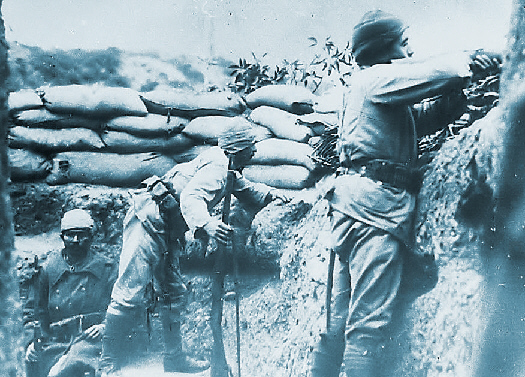
The Turkish Soldier — Tough, Tenacious, and Enduring
If there was clear deficiency in the Turkish Army, it was
at the junior leader level. Unlike their German teachers, the
Turks lacked that corps of hardened, experienced, professional,
long-service NCOs that made the German Army so
formidable. This lack would become a major problem for the
Turks as the pool of talented young officers were killed and
no leaders was waiting in the ranks to step up and replace
them.
In 1914 the regular Turkish Army comprised 36 field
(admittedly small) divisions, divided into corps in the four
armies. A standard Turkish corps comprised three infantry
divisions, an artillery regiment and a cavalry regiment. Each
infantry division had (in theory) three infantry regiments and
an artillery regiment. In peace time, numbers were small. The
average strength of a Turkish infantry division in pre-mobilization
1914 was but 4000. After mobilization, this rose to 10,000 (still about half the
strength of a German or British division.) To bring the army
up to war strength, the Turks had to mobilise 477,868 men
and 12,469 officers. (The Germans believed, erroneously,
that the Turks could mobilize more than a million men on the
outbreak of war.)
The Turks may have had manpower, but they suffered
from severe material shortages — including artillery and
(especially) machine guns. The estimate was they were 280
field guns short of establishment and 200 machine guns
short (bearing in mind the machine gun establishment was
only four guns a regiment). There were severe shortages of
ammunition and shells as well. The Turkish Army was even more under strength in the
essential services area. Motorization and aviation were basically
nonexistent. Severe shortages of supply wagons and
horses to pull them affected every arm of the army. Medical
services were chronically short of trained staff, and supplies
were likewise almost impossible to obtain.
One thing the Turkish forces did have was experience.
Their unfortunate experiences in the Balkan Wars (where
they were soundly beaten) had taught them the benefit of
trenches for defensive operations. By the time the Anzacs landed, the Turks had already
conducted major operations in the Caucasus (involving
150,000 troops) against the Russians. They had also made
one (unsuccessful) attempt against the Suez Canal and, as is
better known, they had already defeated the combined fleets
of the strongest naval powers in the world.
We have very few glimpses into the life of Johnny Turk
in the trenches opposite the Anzac line.
They, too, were plagued by the stench and the flies, and
had no cove in which to swim. Like the Anzacs, they had
a nickname for their adversary, "John Kikrik," whom they
regarded with the same wary respect. Their Anzac opponents could glean only scraps
of intelligence from prisoners. Individual Turks, often
Greeks or Kurds, crept out from their lines and deserted.
Anzac troops had to be reminded not to shoot single
unarmed Turks approaching their lines. As a result, a trickle of intelligence reached Anzac:
but always from Turks who had a grudge against their
Ottoman overlords and who often told their interrogators
what they wanted to hear. As a result, the intelligence
reports often gave an unduly optimistic gloss on conditions
on the Turkish side of the line.
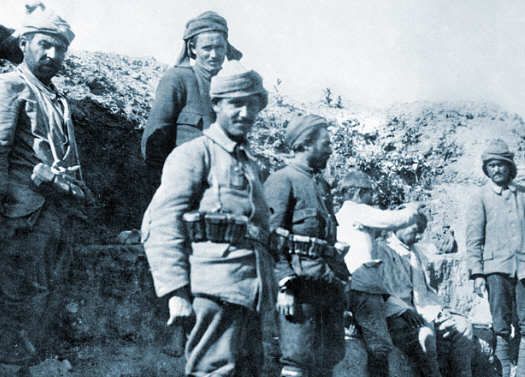
"Very Game Fellows"
Appalling though conditions were on the Anzac side
of No-Man's-Land, the Turks had the worst of it. Hans
Kannengeisser, a German commander of Turkish divisions
on Gallipoli, recorded his memories of the campaign.
Turkish uniforms were "almost unbelievably bad,"
their footwear often strips of cloth tied with string.
Though unable to bathe like the Anzacs, the Turks'
only advantage was that they had more and better drinking
water, from springs in the hills. Mostly peasant
soldiers, their food was that of the villages they had left& #8212 bread, lentils, onions, and beans.
Their officers, however, enjoyed a much higher quality
of food and comfort, as did their German advisers, a
few hundred of whom served in the campaign. There was
little love lost between the Turks and their senior ally:
"Who has heard of a German officer being killed at the
Dardanelles?" a Turkish officer asked.
Even more than their enemies, Turkish soldiers craved
tobacco — Tütün — not least to mask the appalling stench
of thousands of unburied bodies littering their trenches
and rear areas.
Corpses were neither recorded nor buried individually,
and today the gullies of the peninsula on the Turkish side
of the line are still littered with drifts of decaying bones.
No one knows exactly how many Turks died on Gallipoli — perhaps 85,000 — or even how many were wounded or
fell ill. The shared ordeal of the spring and summer effaced
the glib racism of the earlier months. The Turks, an
Anzac remarked in his diary, "strike me as being very
game fellows". That did not prevent him from hacking off the noses
of bullets to make crude dumdum rounds, ostensibly to
slash open sandbags, but if they hit a man the tumbling
bullet would smash muscle and bone to bloody pulp.
Still, he reflected the growing realization that the Turks
were also victims of the war.
Adapted from the Australian Armed Forces commemorative brochure, Gallipoli: The 95th Anniversary
|
|
|
|
Remembering Anzac Day: 25 April 1915, Part II
Anzac Day at Gallipoli: Not for Wimps
Readers probably know that the Gallipoli Peninsula is pretty rugged terrain. Usually when you visit the battlefields there, though, you have the luxury of being driven to the highest elevations. That is not, however, the case every 25 April, the day of the annual Anzac Day Commemoration. The roads to the heights are all shut down for the day. Here is what you would be in for, step-by-step, if you plan to visit the site on some April 25th in the future and attend all the major events.
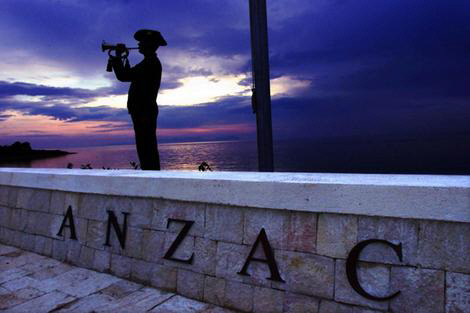
Sunrise Ceremony at North Beach, Anzac Cove (0530-0615 hrs)
The first event of the day honors the predawn landing of 25 April 1915. Tour buses are allowed within 1 km of Anzac Cove. This will be your last motorized trip of the day until you depart the peninsula. After this initial event you need to start your hike for Lone Pine. Pack rations and lots of water.
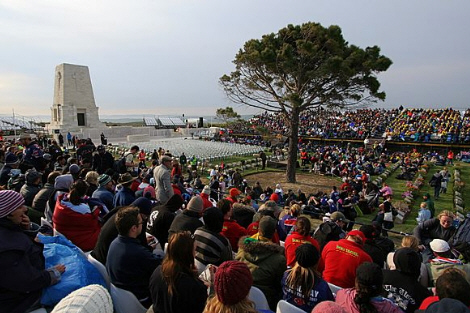
Lone Pine Commemoration (1000-1045 hrs)
Site of a ferocious attack during the August 1915 Allied offensive, Lone Pine is the most hallowed of locations at Gallipoli for Australians. It is reached by a 3 km uphill walk about half of which is unpaved and very steep. Don't dawdle afterward, though — you, have another 1.2 km uphill march ahead of you, and you will have to skedaddle to catch the the next event, the most important Turkish memorial of the day.
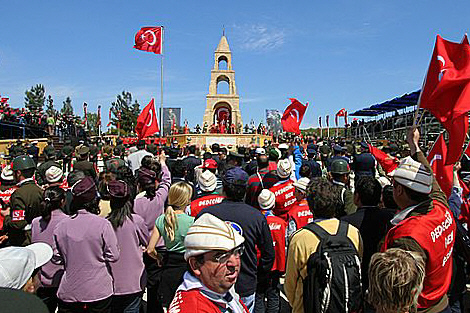
Turkish 57th Regiment Ceremony (1115-1200 hrs)
The 57th Regiment was the unit Turkish hero Mustafa Kemal ordered to die guarding the heights above Anzac Cove on 25 April 1915. The unit was annihilated that day, but held the heights, and they are honored with each Anzac day with their own ceremony. Afterwards, you have one remaining 2.3 km stretch uphill to the peak known as Chunuk Bair to manage, and you have a full 30 minutes to do it.
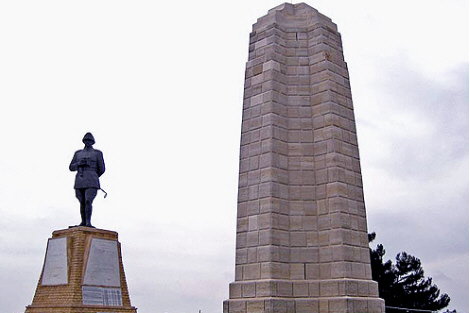
Mustafa Kemal and New Zealand Memorials at Chunuk Bair
(New Zealand Commemoration 1230-1315)
Congratulations! You have climbed vertically about 860 feet since daylight and have made it as far as the entire Allied Expeditionary Force did in 1915. New Zealanders captured this high ground at Chunuk Bair, but their replacements could not resist the onslaught organized by the man of the hour, Mustafa Kemal, when he arrived on the scene. Kemal is the great hero of Gallipoli, personally directing the defeat of three Allied operations during the campaign and is remembered at this location and many other places around the battlefield. After the ceremony, however, your day is not quite done. Now you have to walk back down to the beach the way you came to meet your bus.
|
|
World War I Headlines
in the 21st Century
|
|

General Sir Horace Smith Dorrien
Victor at Le Cateau, Smith-Dorrien commanded II Corps of the British Army through the 1914 campaign. After commanding the Second Army during the 1915 gas attack at Ypres, his military career was effectively ended when British supreme commander Sir John French replaced him after a dispute over withdrawing Second Army to a more defensible position. TL
|
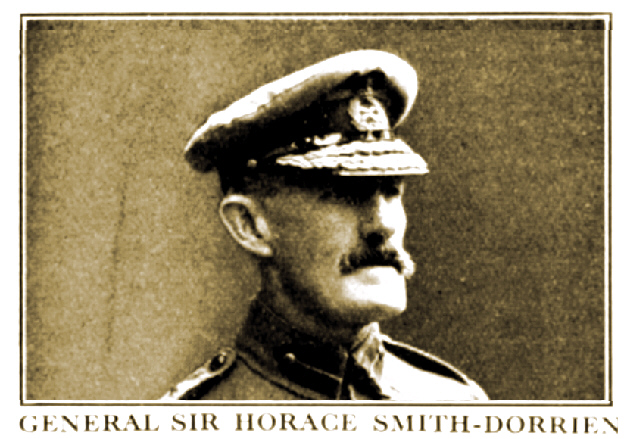
Click Here to Access a Contemporary Account of Smith-Dorrien's 1914 Campaigns
|
|
|
|
|
Subscribe to Our Online Magazine
|
|

|
|
|
Page Three
|
|
|
Access to In-Depth Articles
Introduction to: Light for the New Millennium
|
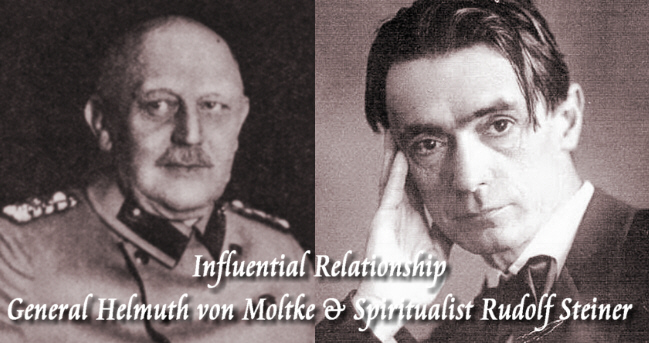
Click on the image to download the 24-page PDF document.
|
Animal Gas Masks
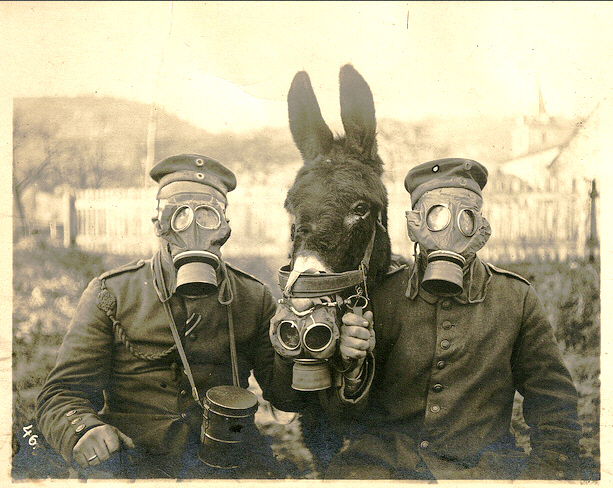
|
Despite the comic "Francis the Talking Mule" look to this German photo, keeping the working animals alive (we're talking horses, mules, dogs and pigeons) was an essential and serious task for all the combatants. Our friends at the World War I Document Archive have an excellent photo essay on some of the solutions that were improvised. (link)
|
|
|

|
 |
Just Activated!
Major Literary Resource at the New WW1HA Website
|
|
The World War One Historical Association intends to be the #1 source on the Web for information on the literature and films of the Great War. For our new website we have consolidated information that both of our parent organizations have compiled for over a decade and placed them in the good hands of frequent Trip-Wire contributor Len Shurtleff. Len, as you may know, has edited the online feature "Len's Bookshelf" for years. The "Bookshelf" was the single most visited feature on the former Western Front Association-USA's Internet site. The expanded "Bookshelf" will include all of Len's traditional features—updated monthly—plus recommended lists of the best World War One books and films, as well as information on our annual literary award, the Tomlinson Prize. Here is an image of a key section on the new and expanded "Len's Bookshelf" so you can see what is currently available soon. Just click on the image to go to the home page of Len's Bookshelf

|
|
|
|












